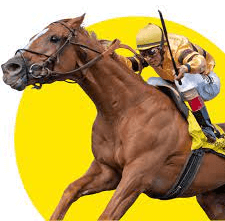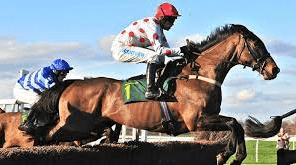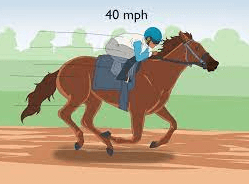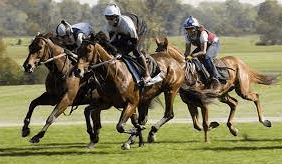Can You Explain The Betting And Wagering Aspects Of Thoroughbred Horse Racing?

Thoroughbred horse racing is not only a thrilling sport to watch but also offers an opportunity for individuals to engage in betting and wagering. Understanding the betting and wagering aspects of this sport can be complex, with various types of bets, odds, and payouts involved.
In this article, we will delve into the intricacies of thoroughbred horse racing betting, exploring different bet options, explaining odds and payouts, providing tips for making informed bets, discussing strategies for managing risks, introducing key betting terminology, and emphasizing responsible gambling practices.
When it comes to thoroughbred horse racing betting, there are numerous types of bets that one can place. From simple win or place bets to more complex exotic bets like exactas or trifectas, each bet offers a different level of risk and potential reward. Exploring these betting options allows individuals to tailor their wagers based on their preferences and understanding of the horses’ performances.
Understanding the odds and payouts associated with thoroughbred horse racing is crucial in making informed betting decisions. Knowing how the odds are calculated based on factors such as a horse’s past performance or its perceived chances of winning can assist in evaluating the potential return on investment. Additionally, being aware of payout structures ensures that bettors have realistic expectations regarding their winnings.
By providing insights into these aspects of thoroughbred horse racing betting, this article aims to equip readers with knowledge that will enable them to engage in this form of wagering responsibly while maximizing their enjoyment and potential profits.
Types of Bets in Thoroughbred Horse Racing
Thoroughbred horse racing offers a variety of betting options to its enthusiasts, including win, place, show, exacta, trifecta, and superfecta bets.
Differentiating between straight bets and exotic bets is essential for understanding the various wagering possibilities in this sport.
Straight bets are simple wagers where bettors predict the order of finish for one or multiple horses. These include win bets (predicting the first-place finisher), place bets (predicting a horse to finish first or second), and show bets (predicting a horse to finish in the top three).
On the other hand, exotic bets involve predicting multiple outcomes accurately. For example, an exacta bet requires selecting two horses to finish first and second in a specific order, while a trifecta bet involves picking three horses to finish in the top three spots in their exact order. Lastly, superfecta bets require correctly predicting four horses’ finishing positions.
To facilitate these wagers, thoroughbred horse racing employs pari-mutuel betting systems where all wagers are pooled together and then divided among winning bettors after deducting taxes and track fees. This system ensures that odds fluctuate based on how much money is placed on each outcome, making it an intriguing aspect of wagering on thoroughbred horse racing events.
Exploring Complex Bets
Delving into the intricacies of complex bets in the realm of horse racing unveils a labyrinthine network of interwoven strategies, where seasoned bettors navigate an intricate web of possibilities to maximize their potential winnings.
These complex betting strategies require a careful analysis of race data, including factors such as past performance, track conditions, jockey statistics, and trainer patterns.
Bettors may employ various approaches such as using mathematical models to calculate odds or studying historical trends to identify value bets.
Additionally, some advanced betting strategies involve combining multiple bets into exotic wagers like exactas, trifectas, or superfectas, which require correctly predicting the precise order of finish for multiple horses.
Successful execution of these complex bets necessitates a deep understanding of the sport and its nuances while also relying on thorough research and analysis to uncover hidden opportunities.
By assimilating information from various sources and employing shrewd decision-making skills, bettors can unlock the potential for substantial returns in this captivating world of complex wagering.
Understanding Odds and Payouts
Examining the intricacies of odds and payouts in the realm of horse racing is akin to peeling back the layers of a treasure chest, revealing the hidden potential for financial gain that lies within.
To fully understand these aspects, one must first grasp the concept of calculating potential winnings. This involves analyzing the odds assigned to each horse and determining how much money can be won based on a given wager.
Additionally, it is crucial to pay attention to odds fluctuations, as they provide valuable insights into how bettors perceive a horse’s chances of winning. Fluctuations in odds can indicate shifts in public opinion or new information that may impact a horse’s performance.
By understanding these intricacies, bettors can make more informed decisions and potentially increase their chances of achieving financial success through thoroughbred horse racing.
Tips for Making Informed Bets
One key strategy for making informed bets is to carefully analyze past performance data of horses, including their win percentages, average finishing positions, and jockey statistics.
By studying these statistics and trends, bettors can identify patterns or indicators that may indicate a horse’s potential for success in future races.
Analyzing the win percentages allows bettors to assess a horse’s ability to consistently finish first in races, while considering the average finishing positions provides insight into a horse’s overall competitiveness.
Additionally, examining jockey statistics can give an understanding of how well a specific jockey has performed with certain horses in the past.
By incorporating these factors into their analysis, bettors can make more informed decisions when placing wagers on thoroughbred horse racing events.
Setting a Budget for Betting
To effectively manage funds when participating in horse racing events, it is crucial to establish a well-defined budget that aligns with one’s financial capabilities and risk tolerance. Setting limits and practicing bankroll management are essential aspects of responsible betting in horse racing.
By setting a budget, individuals can determine the amount of money they are willing to allocate for betting purposes without negatively impacting their overall financial situation. This allows for better control over spending and reduces the risk of excessive gambling.
Bankroll management involves dividing the allocated budget into smaller units called ‘units’ or ‘betting points.’ These units represent the amount of money that will be wagered on each bet. By setting a maximum bet size based on a percentage of the total bankroll, individuals can protect themselves from significant losses during losing streaks while still having enough capital to take advantage of favorable betting opportunities.
Additionally, setting limits on daily or weekly betting activities can help maintain discipline and prevent impulsive decisions driven by emotions or chasing losses.
Overall, by establishing a well-thought-out budget and implementing effective bankroll management strategies, individuals can enhance their chances of enjoying horse racing as an entertaining hobby while minimizing potential financial risks.
Strategies for Managing Risks
This discussion will focus on two important strategies for managing risks in thoroughbred horse racing: hedging bets and using multiple bets.
Hedging bets involves placing additional wagers to minimize potential losses or secure a guaranteed profit, regardless of the outcome of the race. This strategy allows bettors to mitigate their risks by diversifying their bets across different outcomes.
Additionally, using multiple bets, such as combination or accumulator bets, can increase the chances of winning by covering various possible outcomes within a single bet.
These strategies are commonly employed by experienced bettors to optimize their chances of success while minimizing potential losses in horse racing.
Hedging Bets
Hedging bets in thoroughbred horse racing allows bettors to mitigate potential losses by placing additional bets on different outcomes. Hedge betting involves placing multiple wagers on different horses or outcomes in a race, with the aim of offsetting potential losses from one bet with winnings from another.
Bettors employ various hedging strategies to manage risks and increase the chances of securing a profit. One common strategy is to place a win bet on a favored horse while also placing an exacta or trifecta box bet that covers multiple possible combinations. This way, if the favored horse does not win but finishes in second or third place, the bettor still has a chance of winning through the box bet.
Another strategy is to hedge bets by placing backup bets on other horses with favorable odds, ensuring that there are multiple opportunities for winning even if one selection fails. Hedging bets requires careful analysis of factors such as horse form, jockey performance, track conditions, and past results.
By employing effective hedging strategies, bettors can minimize potential losses and maximize their chances of securing profits in thoroughbred horse racing.
Using Multiple Bets
Employing a multitude of bets in thoroughbred horse racing can significantly enhance the potential for lucrative outcomes, amplifying the thrill and anticipation for bettors. Multiple bet strategies, such as combination bets, offer a way for individuals to increase their chances of winning by placing multiple wagers on different horses or races. These strategies allow bettors to diversify their bets and spread their risk across various outcomes, increasing the likelihood of at least one successful wager.
Combination bets involve selecting multiple horses in different races and combining them into a single bet. This approach allows for higher potential payouts if all selections are correct but also increases the difficulty of winning.
By using multiple bets, bettors can not only maximize their chances of success but also enjoy the excitement and challenge that comes with predicting the outcome of multiple races simultaneously.
Betting Terminology
Betting terminology in thoroughbred horse racing encompasses a variety of terms used to describe different types of bets and wagering strategies. Understanding these terms is essential for bettors who want to make informed decisions and maximize their chances of winning.
Here are three key betting terminologies in horse racing:
1) Win Bet: This is the simplest type of bet where the bettor selects a single horse to finish first. If the chosen horse crosses the finish line first, the bettor wins.
2) Place Bet: In a place bet, the bettor selects a horse that they believe will either finish first or second. If the chosen horse finishes in one of these two positions, the bet is successful.
3) Exacta Bet: The exacta bet requires the bettor to correctly predict which horses will finish first and second in order. This type of bet offers higher payouts but also involves more risk as both horses must be accurately predicted.
By familiarizing themselves with these betting terminologies and understanding how they work within different betting systems and strategies, punters can approach thoroughbred horse racing with greater knowledge and confidence, making their wagering experience more enjoyable and potentially profitable.
Enjoying the Atmosphere of Horse Racing Events
Attending a horse racing event allows individuals to immerse themselves in the vibrant atmosphere of the races, where they can witness the excitement and beauty of these magnificent animals in action.
Apart from the thrill of watching the races, horse racing events also offer an opportunity for individuals to showcase their sense of style through horse racing fashion.
From elegant hats and dresses to dapper suits and ties, attendees often dress up for these prestigious events, adding to the overall grandeur.
Additionally, famous horse racing events such as the Kentucky Derby or Royal Ascot attract a diverse range of spectators from around the world, creating a truly international atmosphere.
The energy at these events is palpable as spectators cheer on their favorite horses and jockeys, contributing to an unforgettable experience that combines sport, fashion, and socializing.
Responsible Gambling Practices
To ensure a safe and enjoyable experience for all participants, it is crucial to adhere to responsible gambling practices when engaging in horse racing events. Responsible gambling awareness is essential in order to prevent the development of gambling addiction and its associated negative consequences.
It is important for individuals to be aware of the signs of gambling addiction, such as an increasing need to bet larger amounts of money, unsuccessful attempts at cutting back or stopping gambling, and feelings of restlessness or irritability when attempting to reduce or stop gambling. By recognizing these signs early on, individuals can seek help and support from resources available for problem gamblers.
Additionally, setting limits on betting amounts and time spent gambling can also help promote responsible behavior. Ultimately, responsible gambling practices allow individuals to enjoy the thrill of horse racing while minimizing potential harm caused by excessive or problematic wagering activities.
Frequently Asked Questions
How do I choose which horse to bet on in a race?
To choose a horse to bet on in a race, one can analyze horse racing statistics and consider factors such as jockey performance. These objective measures provide valuable insights for making informed wagering decisions.
Are there any specific strategies or tips to increase my chances of winning?
To increase chances of winning in horse racing, one can employ effective betting techniques and strategies. Analyzing past performance records, studying track conditions, and considering jockey and trainer statistics are crucial aspects for making informed wagers.
What are the different types of odds and how do they affect my potential winnings?
Different types of odds in thoroughbred horse racing include fractional, decimal, and moneyline. They represent the likelihood of a particular outcome and determine potential winnings. Calculating potential winnings involves multiplying the odds by the amount wagered.
How can I ensure that I am gambling responsibly and not risking more than I can afford to lose?
Responsible gambling involves setting betting limits to avoid risking more than one can afford to lose. By establishing a predetermined budget and sticking to it, individuals can ensure they are gambling responsibly and maintaining control over their finances.
Are there any specific betting terminologies that I should be familiar with before placing my bets?
Some common betting terminologies in thoroughbred horse racing include win, place, show, exacta, trifecta, and superfecta. Common mistakes in horse race betting include not understanding odds and making impulsive bets without proper research or analysis.
Conclusion
In conclusion, thoroughbred horse racing offers a variety of betting and wagering options for enthusiasts. From simple win/place/show bets to more complex exotic bets, there is something for everyone. Understanding the odds and payouts associated with each bet type is crucial in making informed decisions.
To ensure responsible gambling practices, it is important to set a budget for betting and stick to it. Additionally, managing risks through strategic planning can help minimize losses and maximize potential winnings. Familiarizing oneself with betting terminology will also enhance the overall experience of horse racing events.
When attending these events, it is not just about placing bets but also about immersing oneself in the atmosphere. The thundering hooves, cheering crowds, and vibrant colors create an exhilarating ambiance that cannot be replicated elsewhere. It is akin to being swept away by a gust of wind as you watch these majestic creatures race towards the finish line.
Just like a master painter skillfully blends colors on their canvas, thoroughbred horse racing combines elements of strategy, chance, and passion into one captivating spectacle. And much like an allegory narrates a story through symbolic representations, horse racing tells tales of triumphs and tribulations that resonate with both spectators and bettors alike.
In this world of thoroughbred horse racing, the track becomes our stage where horses become performers in an unfolding drama. As we place our wagers from the stands or through online platforms, we become partakers in this grand narrative where dreams are realized or shattered within mere seconds.
So let us embrace this thrilling journey with open hearts and minds as we witness the beauty and excitement that encapsulate thoroughbred horse racing.



